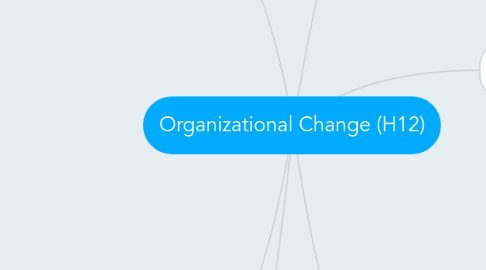
1. Organizational learning
1.1. The process managers use to improve organization members' capacity to understand and manage the organization and its environment so they can make decisions that continuously increase organizational effectiveness
1.2. Types of organizational learning
1.2.1. Exploration
1.2.1.1. Organizational members' search for and experimentation with new kinds of forms of organizational activities and procedures
1.2.2. Exploitation
1.2.2.1. Organizational members' learning of ways to refine and improve existing organizational activities and procedures
1.3. Levels of organizational learning
1.3.1. Individual
1.3.2. Group
1.3.3. Organization
1.3.3.1. Different cultures
1.3.3.1.1. Adaptive culture
1.3.3.1.2. Inert culture
1.3.4. Interorganizational
2. Knowledge management and information technology
2.1. Knowledge management is a type of IT-enabled organizational relationship that has improtant implications for both oganizational learning and decision making
2.2. Codification versus personalization
3. Factors affecting organizational learning
3.1. Cognitive structure is the system of interrelated beliefs, preferences, expectations, and values a person uses to define problems and events
3.1.1. Cognitive bias are factors that stystematically bias cognitive structures and affect organizational learning and decision making
3.1.1.1. Types of cognitie bias
3.1.1.1.1. Cognitive dissonance
3.1.1.1.2. Illusion of control
3.1.1.1.3. Frequency and representativeness
3.1.1.1.4. Projection and ego-defensiveness
3.1.1.1.5. Escalation of commitment
4. Organizational decision making
4.1. The process of responding to a problem by searching fo and selecting a solution or course of action that will create value for organizational stakeholders
4.2. Programmed decisions are repetitive and routine
4.3. Non-programmed decisions are novel and unstructured
5. Models of organizational decision making
5.1. The rational model
5.1.1. Information and uncertainty
5.1.2. Managerial abilities
5.1.3. Preferences and values
5.2. The carnegie model
5.2.1. Satisficing
5.2.1.1. Limited information searches to identify problems and alternative solutions
5.2.2. Bounded rationality
5.2.2.1. A limited capacity to process information
5.2.3. Organizational coalitions
5.3. The incrementalist model
5.4. The unstructured model
5.5. The garbage-can model
6. Improving decision making and learning
6.1. Strategies for organizational learning
6.1.1. Listening to dissenters
6.1.2. Converting events into learning opportunities
6.1.3. Experimenting
6.2. Using game theory
6.3. Nature of top-management team
6.3.1. Groupthink is the conformity that emerges when like-minded people reinforce one another's tendencies to interpret events and information in similar ways
6.4. Devil's advocacy and Dialectical inquiry
6.4.1. Devil's advocate is someone who is responsible for critiquing ongoing organizational learning
